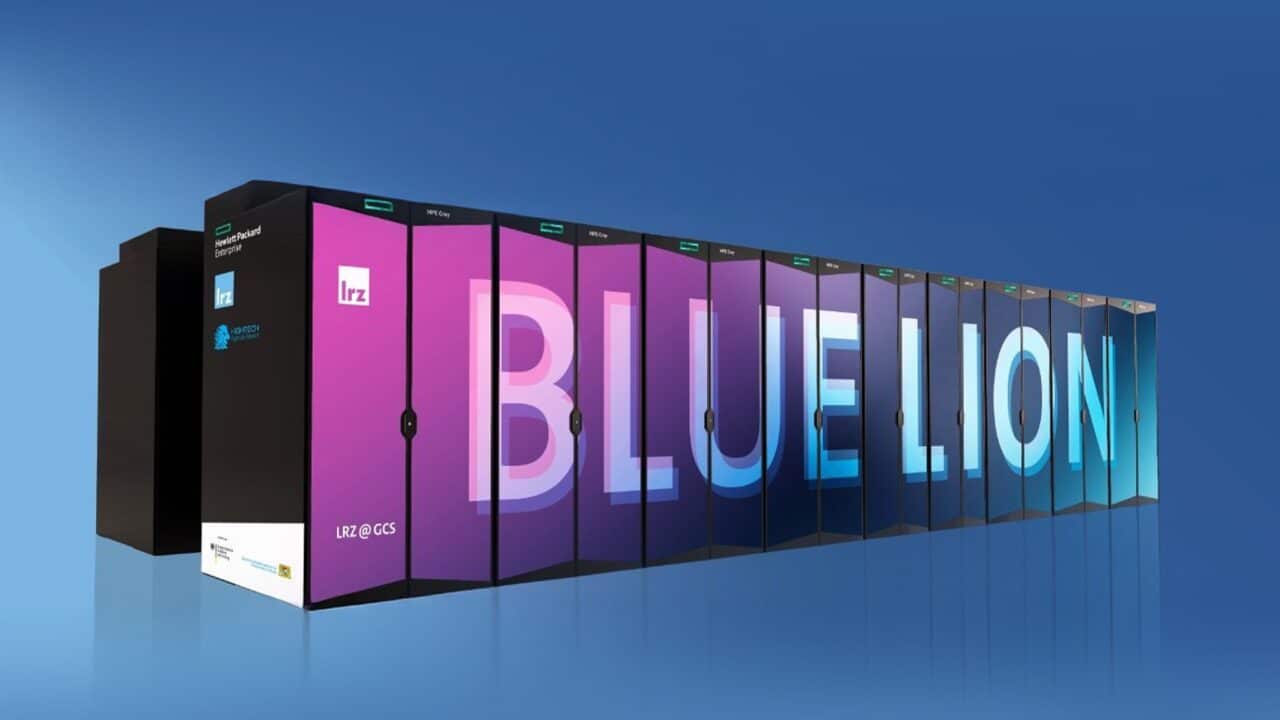The Leibniz Supercomputing Center (LRZ) has announced the upcoming launch of Blue Lion, a supercomputer that promises to multiply the computing power of its predecessor, SuperMUC-NG, by 30 times. However, the real revolution lies in its technological heart: it will be one of the first systems in the world equipped with the new NVIDIA Vera Rubin architecture, designed to lead the next wave of artificial intelligence and accelerated scientific computing.
Vera Rubin: the new era of NVIDIA’s superchip
So far, LRZ had only hinted that its next system would incorporate “next-generation” NVIDIA accelerators and processors. Now it’s official: Blue Lion will feature the Vera Rubin architecture, consisting of the Rubin GPU—the successor of Blackwell—and the Vera CPU, the first processor custom built by NVIDIA to work in sync with the GPU.
The goal is to merge simulation, data analysis, and artificial intelligence into a single high-bandwidth, low-latency platform, breaking down barriers between traditional computing and AI. Its launch is expected in the second half of 2026.
Features and sustainability
Blue Lion will be built by HPE, using HPE Cray supercomputing technology and direct liquid cooling systems without fans, capable of utilizing waste heat to climate adjacent buildings. In addition to its extraordinary energy efficiency, the system is designed to scale workloads in climate science, physics, turbulence, and machine learning, among other fields.
LRZ notes that Blue Lion will also be a pillar of pan-European scientific collaboration, facilitating cross-border research projects.
Vera Rubin also arrives in the United States
The commitment to the Vera Rubin architecture is being mirrored across the Atlantic. The Lawrence Berkeley National Laboratory in California recently announced its Doudna supercomputer, also based on Vera Rubin, intended for over 11,000 researchers worldwide.
Doudna is designed for real-time scientific processing, optimizing performance per joule of energy consumed, and enabling immediate analysis of large data streams from telescopes, fusion experiments, and genomic sequencers. According to forecasts, it will provide up to 10 times the application performance of its predecessor, using only two to three times more energy, which translates to up to five times more efficiency per watt.
A paradigm shift in supercomputing
The arrival of Blue Lion and Doudna marks a trend: AI is no longer an “extra” but has become a central element of scientific supercomputing. Future systems, NVIDIA asserts, will need to be prepared to integrate simulation, artificial intelligence, and real-time data processing, facilitating increasingly agile and collaborative workflows.
The Vera Rubin architecture is NVIDIA’s strategy for this new phase, offering shared memory, coherent computing, and network acceleration—three keys for science and artificial intelligence to advance together.
Beyond hardware: talent and diversity
Alongside these advancements, NVIDIA highlights the role of profiles like Adeola Adesoba, a solutions architect specializing in AI and cybersecurity, who has contributed to the deployment of platforms like NVIDIA RAPIDS and DGX SuperPOD, representing the company’s commitment to diversity and social impact.
Adesoba’s journey, from her native Nigeria to major international conferences on sports, youth, and technology, exemplifies the transformative power of supercomputing when combined with global and collaborative talent.
Blue Lion and Vera Rubin mark the beginning of a new era for European and global supercomputing, where artificial intelligence and science walk—more than ever—hand in hand.
Source: Nvidia Blog

